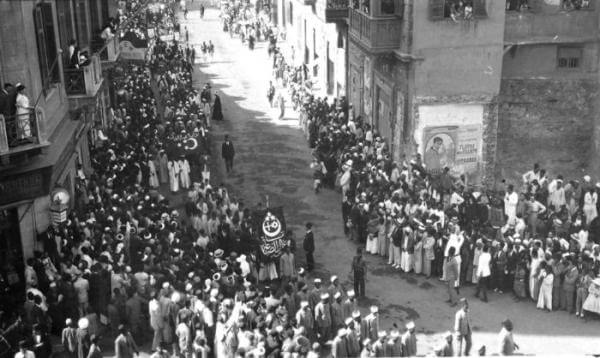Envision this. It is 1919. Revolutionary sentiments are engulfing Egypt. Factions from all over the country are gathering to protest against the British occupation and the exile of Egyptian revolutionary Saad Zaghloul and his companions. Prominent musician Sayed Darwish is composing what shall then become Egypt’s national anthem while people are taking to the streets, demanding the downfall of colonialism.
The year 1919 also marks the first opening of the American University in Cairo’s (AUC) doors in the heart of Cairo’s Downtown. In celebration of the university’s centennial, Business Forward takes a look at how this pivotal year transformed Egypt’s modern economy.
An overview of the economic situation in 1919
A world war had just been concluded, in which Britain was a pivotal player, revealing a plethora of shortcomings in the Egyptian economy, given the occupation. At the time, the economy depended fundamentally on the export of cotton as a crop, European financing for the marketing of the product and European imports, according to a research paper entitled “The Egyptian Revolution of 1919: New Directions in the Egyptian Economy” by Robert L. Tignor.
At the time, Egypt was in heavy debt to foreign countries which had led to severe European interference in the country’s domestic affairs. The banks in Egypt were controlled and run by foreigners or run from overseas – simply, because they were branches of major European firms.
Additionally, foreign firms dominated the whole export-import institution.
What else was brewing under the surface? Hunger and cotton.
It was not only the exile of Zaghloul that drove workers and students – either men or women – to take to the streets. The consequences of the British occupation and its policies’ effects on the population had led to a threatening danger of hunger, motivating peasants to revolt as well, according to Ellis Goldberg in his research paper “Peasants in Revolt – Egypt 1919”.
“A little over a third of Egypt’s peasants were paid laborers; however, and even those in the ambiguous situation of sharecroppers might have sold food crops they received in shares in an inflationary market, thereby losing command over food later,” Goldberg explains.
He goes on to say that peasants had to “tighten their belts” out of fear of going hungry in 1919. “For that reason, they attacked [railways] to prevent the transport of agricultural commodities to the cities.” As a result, Cairo remained isolated from the countryside for weeks.
Another theory suggests that peasants were unsatisfied with what the British had done in 1918, during which they bought cotton crops for cheap and sold them at high prices.
The shift in economic mindset: Focus on entrepreneurs and economic development
With the economy in the stronghold of European dominance and the peasants fearing for their livelihoods, nationalists called for the establishment of an Egyptian industry to reduce dependence on Europe, Patrick Clawson’s paper “The Development of Capitalism in Egypt” reveals.
Egyptian politician Ismail Sedky called for new economic approaches and openly criticized the economic arrangements drawn up by the British financial adviser at the time, given that they were implemented without any parliamentary review, according to Tignor.
Sedky was particularly critical of the large proportion of revenue designated to governmental salaries. Instead, he asked for a reallocation of funds for programs of economic development.
Additionally, he “wanted entrepreneurs to establish textile, food processing and construction industries, [believing] that the Egyptian government should support these endeavors,” Tignor explains.
Moreover, public boycotts of English banks, department stores and products were organized in the early 1920s at times of Anglo-Egyptian crisis, according to Clawson.
A revamped Egyptian economy: An independent bank and pressure groups
With all this in play, a number of entities were established to focus on regaining control of the Egyptian economy through local, homegrown businesses, associations and federations.
One of the firm believers in the concept of an independent economy being key to Egypt’s independence was pioneer economist Talaat Harb.
The 1919 Revolution inspired him to establish Egypt’s first national bank a year later – Banque Misr exclusively dealt in Arabic and was built with local capital, as opposed to all the European banks spread across the country at the time.
“[Harb] spearheaded the concept of investing in national savings and directing them towards economic and social development,” Tignor writes.
This would give Egyptians the opportunity to diversify their country’s economic activities and hence, be more in control of the economy, he adds.
While European capital still played a role, Banque Misr was the first cornerstone of an independent Egyptian economy, leading to the establishment of an Egyptian-owned textile factory, insurance and transportation companies, among others.
The year 1919 later paved the way for the establishment of the Federation of Egyptian Industries (FEI) in 1922 as a pressure group to promote economic, social and political conditions conducive to Egyptian industrial development, according to Tignor. The Egyptian General Agriculture Syndicate was also established in order to stop foreign merchants from controlling and marketing Egypt’s cotton.
Although these organizations were established right after 1919, they affirmatively gained ground in the 1930s, Tignor concludes.









